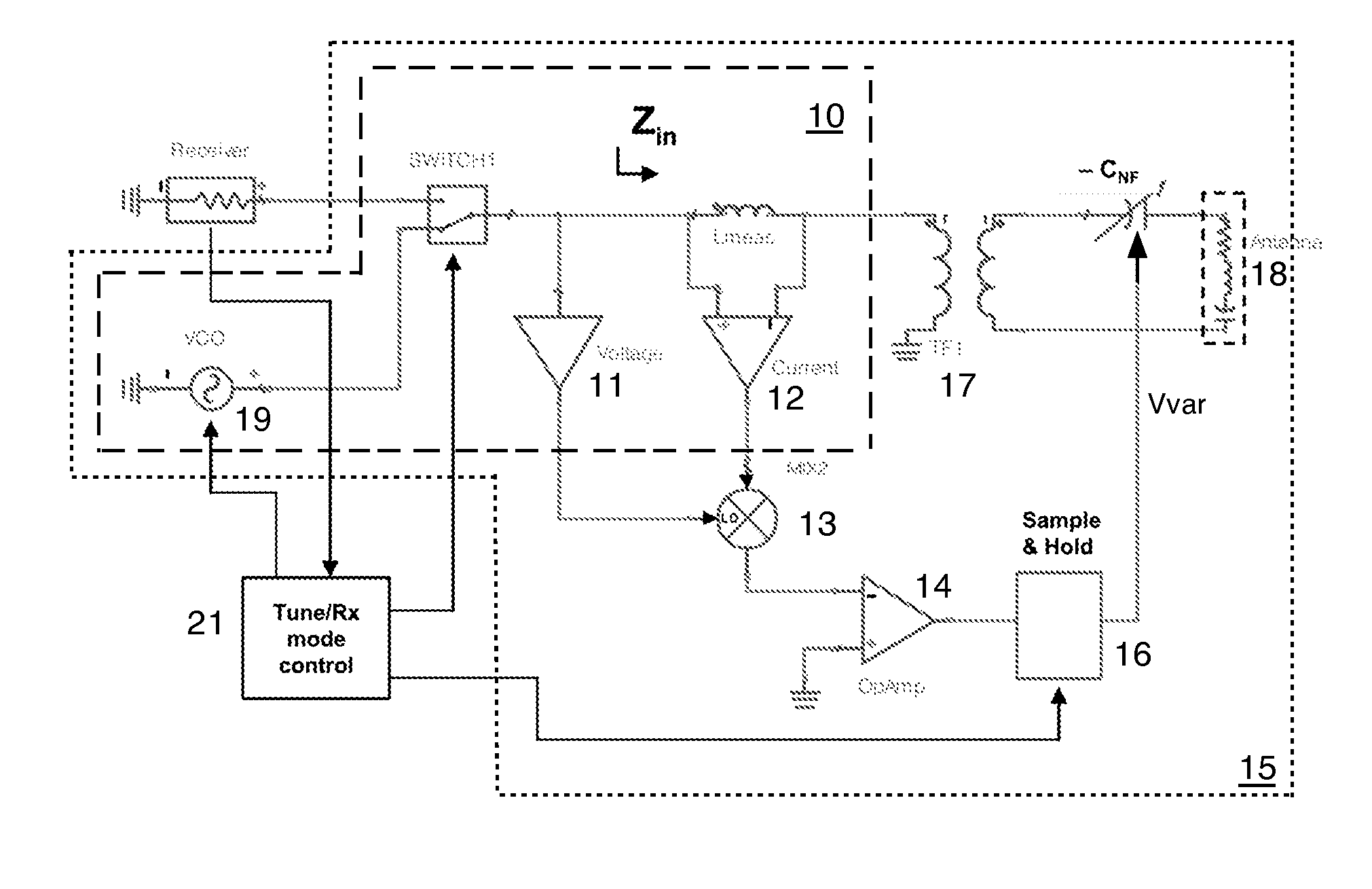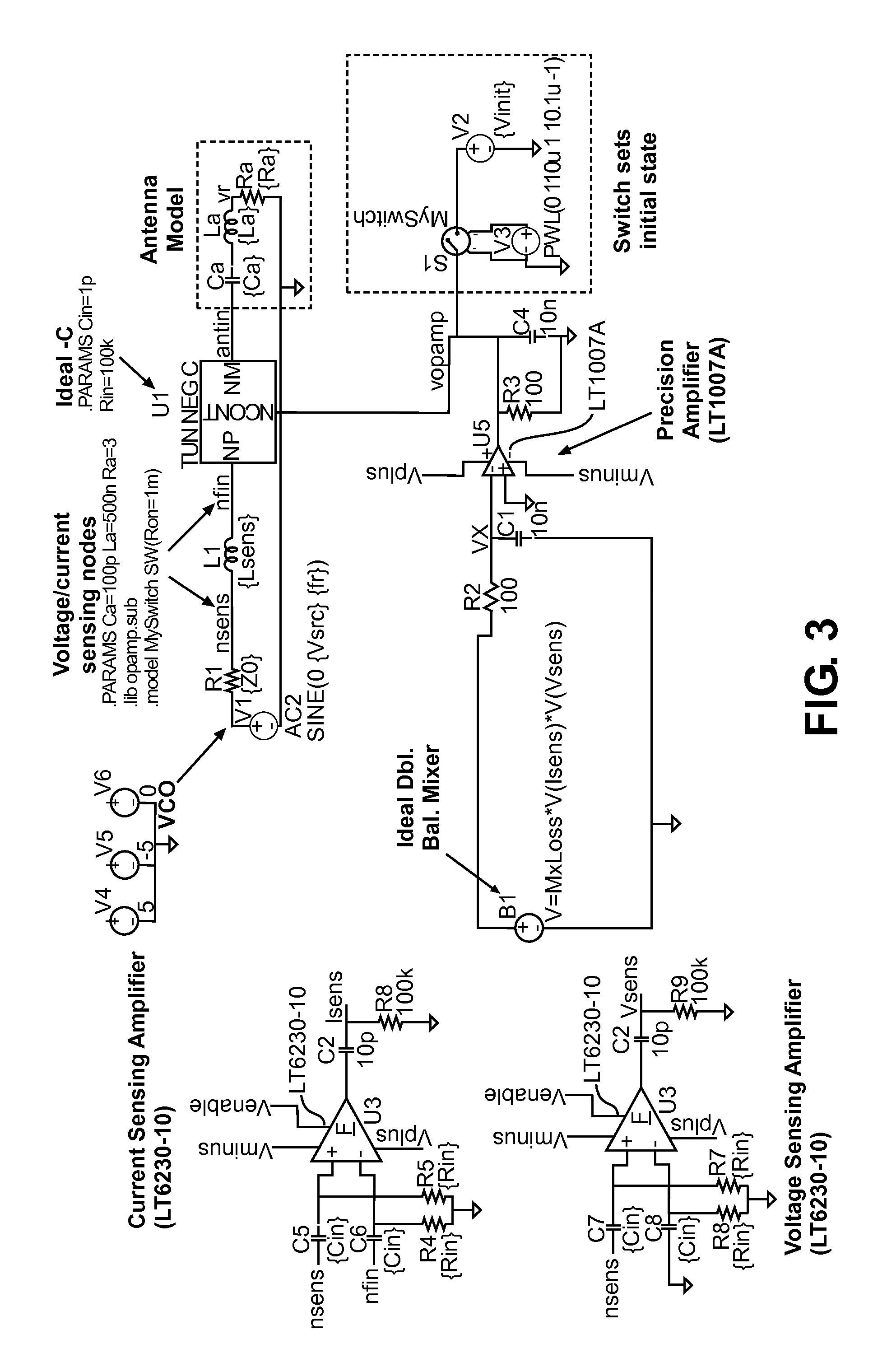Wide bandwidth automatic tuning circuit
- Summary
- Abstract
- Description
- Claims
- Application Information
AI Technical Summary
Benefits of technology
Problems solved by technology
Method used
Image
Examples
Embodiment Construction
[0025]This invention provides an automatically-tuning non-Foster matching circuit, which automatically drives the input reactance (Xin) to zero at one frequency where Xin is the imaginary part of the input impedance (Zin), so Zin=Rin+jXin. It is well known that the performance of electrically-small antennas (ESAs) is limited when using traditional (i.e. passive) matching networks due to their high antenna Q. Non-Foster Circuits (NFCs) can reduce the antenna reactance by orders of magnitude by synthesizing negative capacitance or negative inductance, which are then placed in series (for example, when using negative capacitance to match monopole or dipole antennas) or parallel (for example, when using negative inductance to match slot or loop antennas) such that they cancel the antenna reactance over a broad bandwidth. A high degree of accuracy is desired to effectively cancel large antenna reactances. In addition, NFCs are conditionally stable, and typically have a very small stabili...
PUM
 Login to View More
Login to View More Abstract
Description
Claims
Application Information
 Login to View More
Login to View More - R&D
- Intellectual Property
- Life Sciences
- Materials
- Tech Scout
- Unparalleled Data Quality
- Higher Quality Content
- 60% Fewer Hallucinations
Browse by: Latest US Patents, China's latest patents, Technical Efficacy Thesaurus, Application Domain, Technology Topic, Popular Technical Reports.
© 2025 PatSnap. All rights reserved.Legal|Privacy policy|Modern Slavery Act Transparency Statement|Sitemap|About US| Contact US: help@patsnap.com



